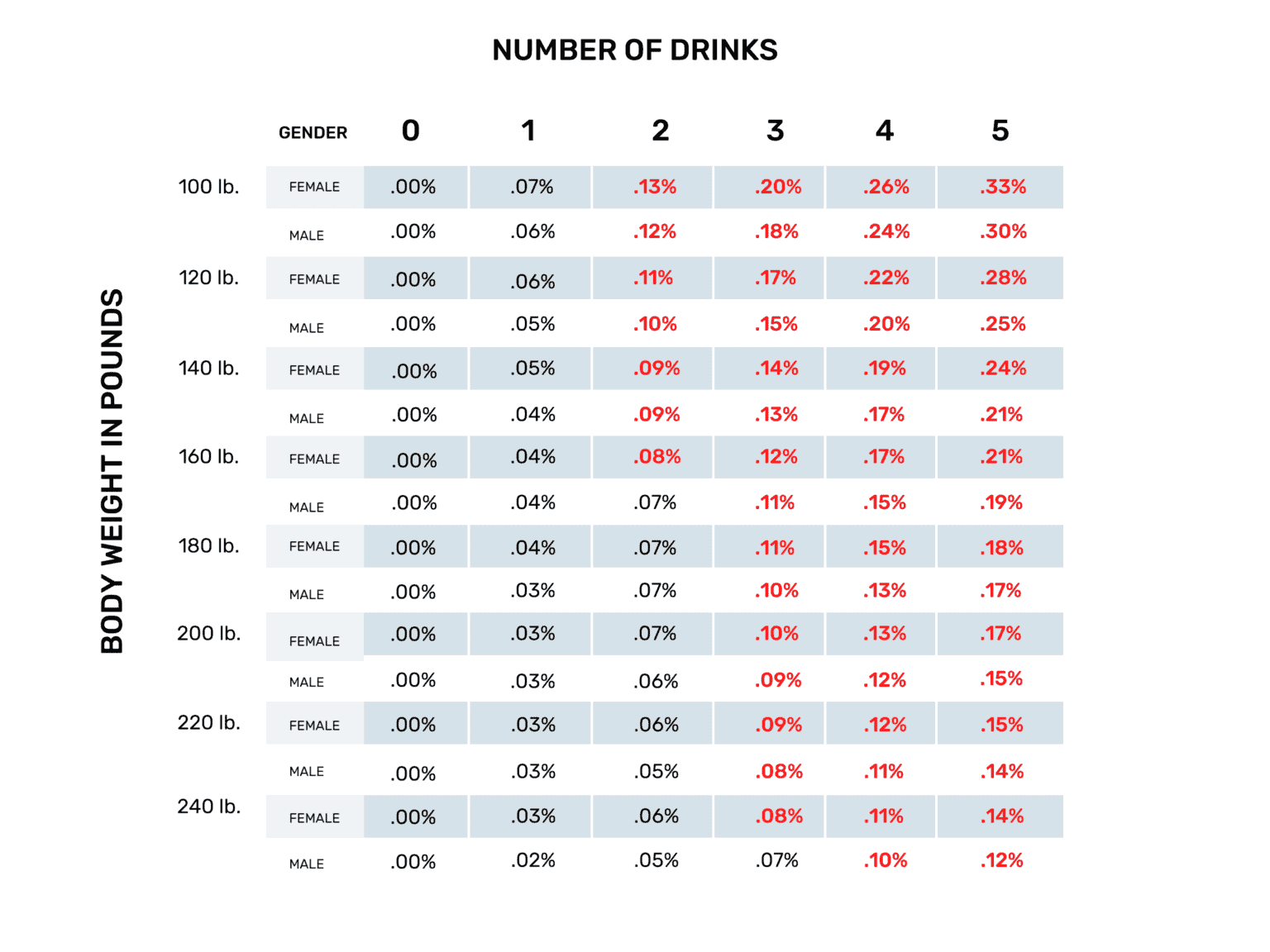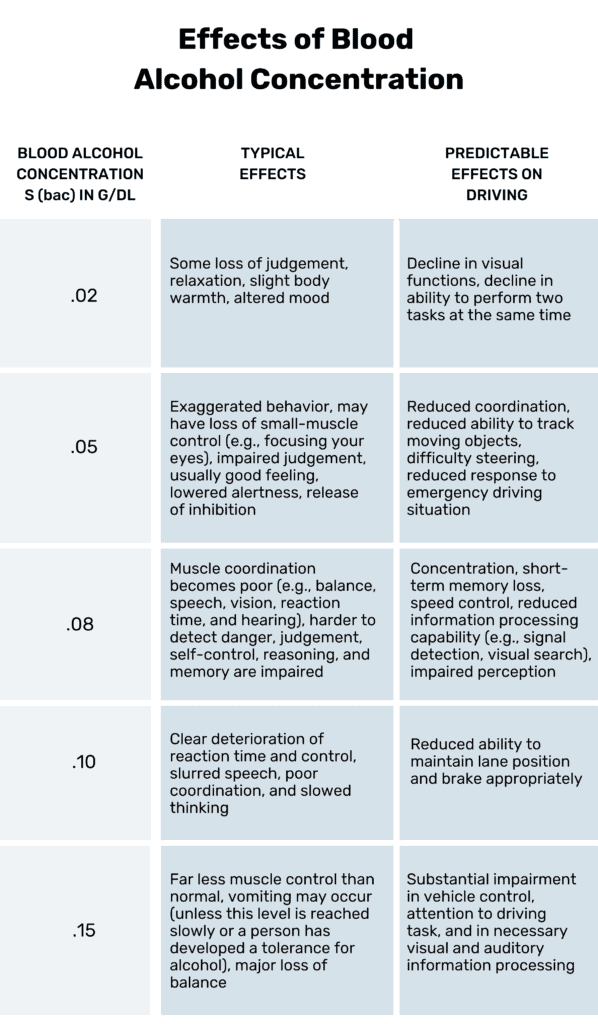When Are You Too Drunk To Drive?
A guide to understanding if your blood alcohol content (BAC) is above the legal limit and typical side effects you may experience.
You may already know that it’s illegal to drive with a blood alcohol content (BAC) of .08% or more in most states, (except for Utah where it is .05% or more) but everyone absorbs and metabolizes alcohol at different rates.
So how do you know how much is too much?
Unfortunately, there’s no magic formula that can pinpoint how many drinks will equate to a certain BAC level. And did you know that you can be convicted of DUI if you are arrested for driving “impaired” even if the alcohol test administered when you are pulled over is under the BAC limit?
Keep in mind, the chart below is just an estimate of the BAC level that corresponds to your body weight and the number of drinks you have consumed.
BAC estimates – Are you too drunk to drive?
NOTE: This chart shows the BAC values for men and women separately. Do not rely on this chart to determine if you should or should not get behind the wheel. This is merely a snapshot based on a few factors (gender, weight, number of drinks). It doesn’t take into consideration things like how tired you are, any medications you could be taking, or how much food you have consumed.
Remember, safety first – if you have been drinking at all, let someone else drive, take a cab, or schedule a rideshare. Don’t drink and drive.

About this chart
1 drink = 1.5 oz. of 80-proof liquor, 5 oz. of 12% wine, or 12 oz of 5% beer.
Red = .08% or greater which is the legal limit in most states.
Time is a factor
Alcohol is metabolized over time. On average, the rate is about .015% per hour. So, if your BAC was .08% at 6 pm, after two hours of not drinking, your BAC would be reduced to about .05%. Again, there are many factors that go into the rate of metabolization.
What do the effects look like?
All of us react differently to alcohol. That said, scientifically there are certain correlations between BAC level and signs of intoxication. The more you drink, the clearer those signs become, and your ability to drive diminishes as BAC increases.
Effects of Blood Alcohol Concentration

DUI Laws by State
Most states in the US have provisions in their laws that allow you to install an ignition interlock device (IID, or sometimes called a car breathalyzer) either before or after conviction. Get all the information you need about the laws for alcohol-related driving offenses and the steps to take to get an ignition interlock installed in your state.
Customer support you can count on
If you or someone you know gets convicted of an alcohol-related offense and are in need of an interlock device, give us a call at 800-634-3077 and we will guide you through the process to regain your freedom to drive. The LifeSafer Ignition Interlock Team is always here to help – 24/7/365. For more information visit lifesafer.com.
